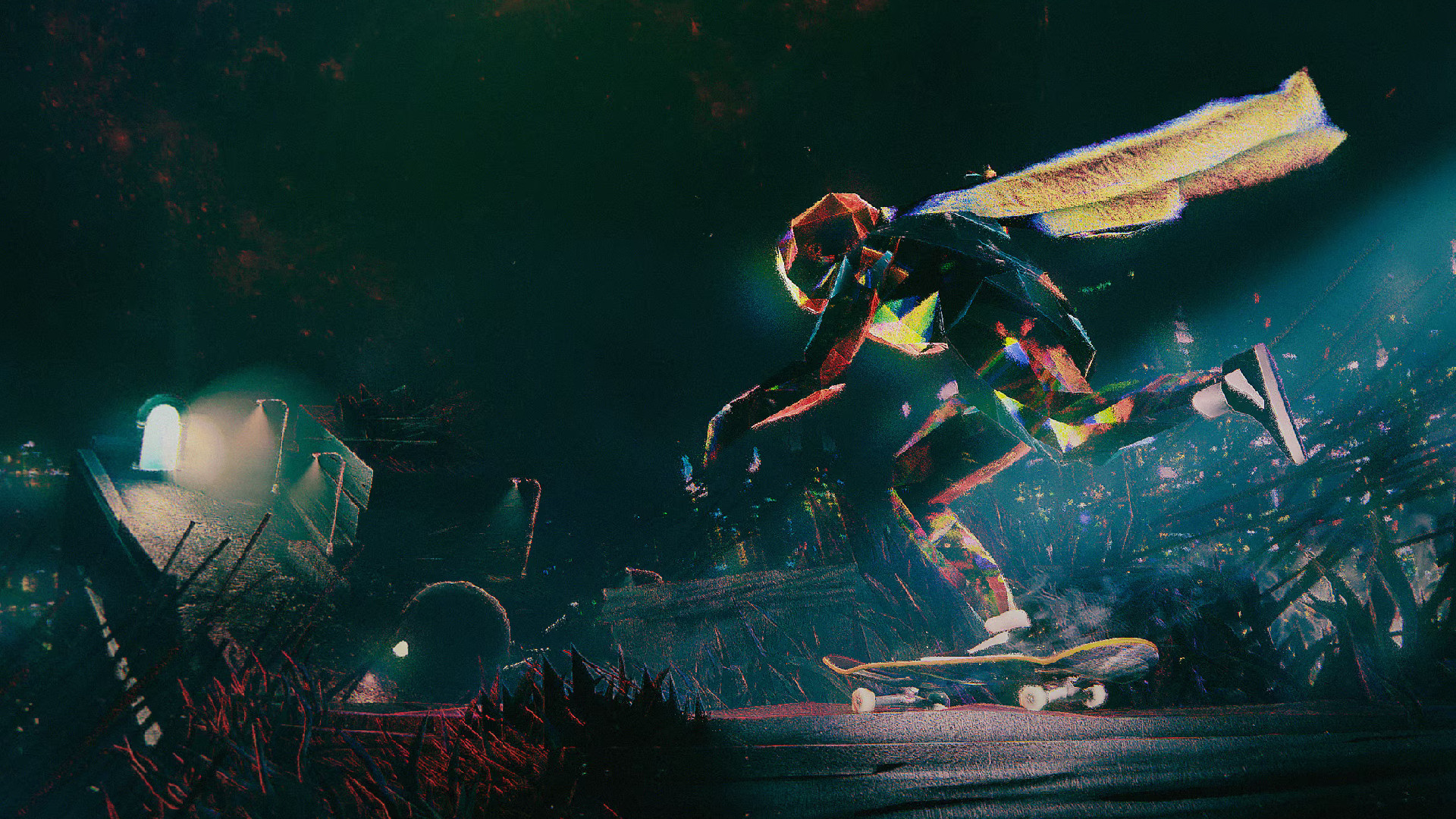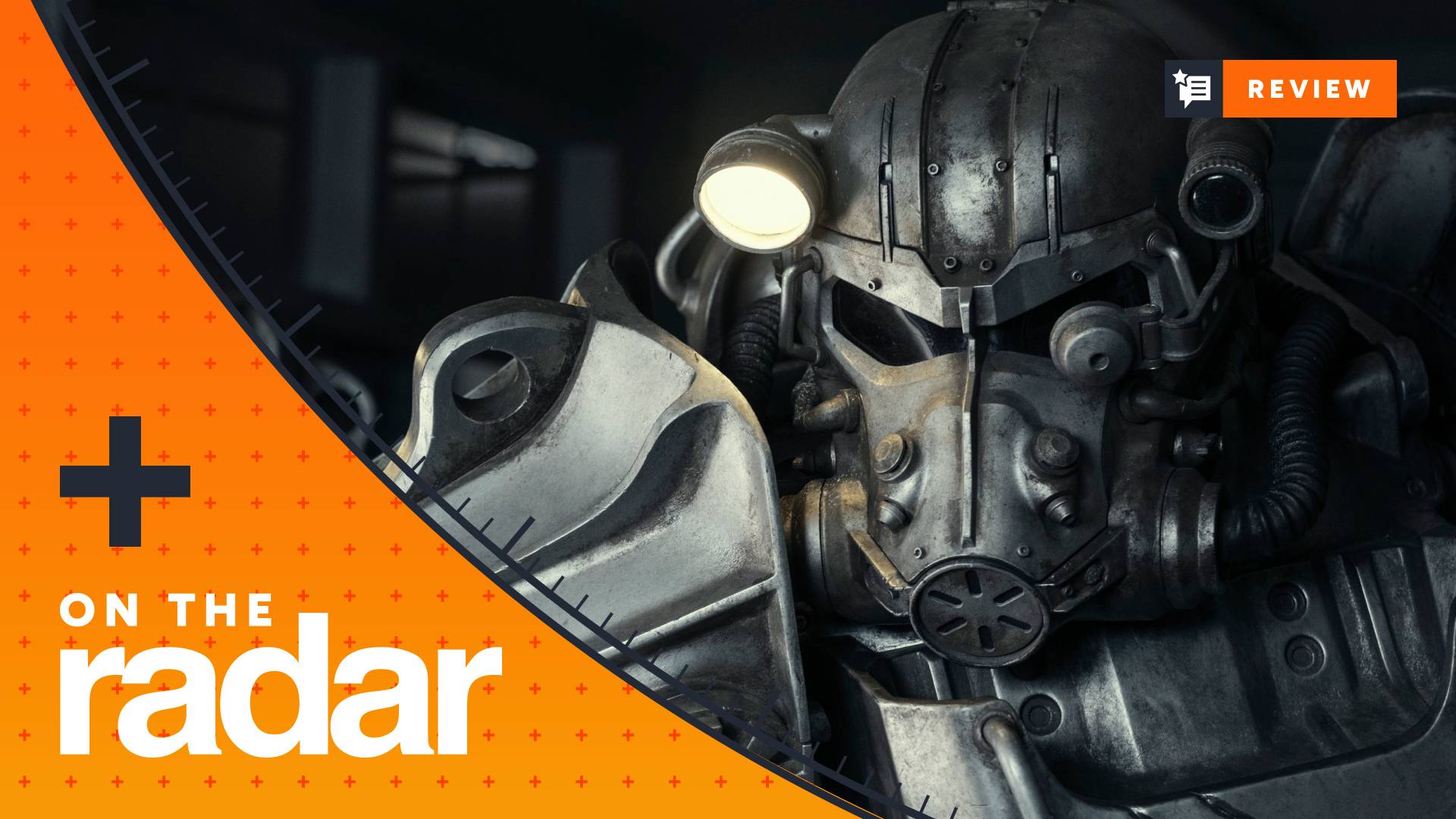Rayman Origins, Beyond Good & Evil and the state of the games industry: An interview with Michel Ancel
Rayman's creator and lead writer Gabrielle Shrager chat about their creative process, plans for BG&E II and the importance of fun
If you ever need an argument to reinforce the idea that games are art, the works of Michel Ancel are a pretty good place to start looking. One of the game industry's most recognizable developers, the energetic 39-year-old has been the driving force behind the quirky Rayman games, the stunning-for-its time adaptation of Peter Jackson's King Kong remake, and the subversive, critically acclaimed commercial failure Beyond Good & Evil.

Above: Rayman Origins' Senior Game Writer/Lead Story Designer Gabrielle Shrager (left), and Rayman creator Michel Ancel
His latest creation, Rayman Origins (due to release Nov. 15) appears to fit neatly into Ancel's rebel oeuvre: it's unapologetically 2D, brilliantly animated, endearingly goofy and fun in an old-school, friends-on-the-couch way. In other words, potentially amazing, but something of a gamble at retail (especially considering the heavy hitters it's up against this November).
When we last played Origins back in August, we had a rare opportunity to visit Ancel's Montpelier studio – and more importantly, to sit down with Ancel and his collaborator, Gabrielle Shrager, for a conversation about Rayman, Beyond Good & Evil (and its sequel), and Ancel's thoughts on the current state of the industry.
GamesRadar: In making Rayman Origins, how has the reception for other previously 3D games that went back to 2D, like Mario, Sonic and Mega Man, influenced you?
Michel Ancel: It’s funny, because we started Rayman Origins a long time ago, in fact. We have been experiencing these [development] tools since like three years ago. While we were doing the first tests – this was for different projects, I hope this [other] project will proceed shortly, it was a 2D project with multiple players. And then we saw LittleBigPlanet, we saw Mario coming, and we were like, “OK, it’s time for us to redesign our game.”
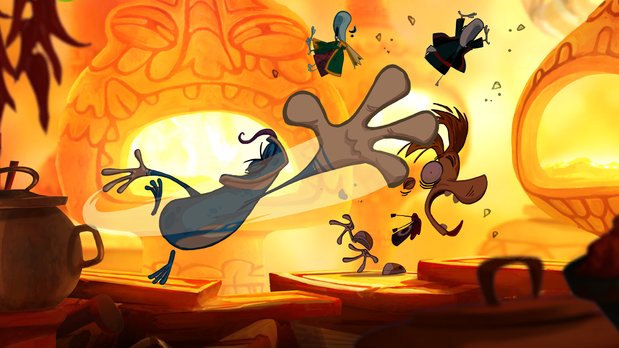
My feeling is that LittleBigPlanet did the first official move toward playing four at the same time. But in my memory, it’s more the good old Bomberman games, or all the tennis games, the 2D tennis games. You were able to play four and five with Bomberman, or even eight on the Saturn. I don’t know, there was one console, it was crazy.
Weekly digests, tales from the communities you love, and more
GR: I think it was 10 on Saturn.
MA: Yeah. And it’s just… it’s not an innovation, it’s just like if we were remembering that 2D makes possible this kind of thing. 3D, you have the camera, it’s very hard to contain the players, or you have to split the screen in 10. Can you imagine? But here in 2D, you have this overall view, and you can make people interact with each other. So I can’t wait to have games where you can play eight.
Of course, it’s difficult. Maybe everybody comes with his controller, and you can play. With this engine, you can play 10 if you want. There’s no limits, just input limits. But it’s just that it was fun, and we just realized that the technology moved too freely, but this old fun is now moving back to 2D, it makes old things able to come back. And with the HD screen, it’s better.
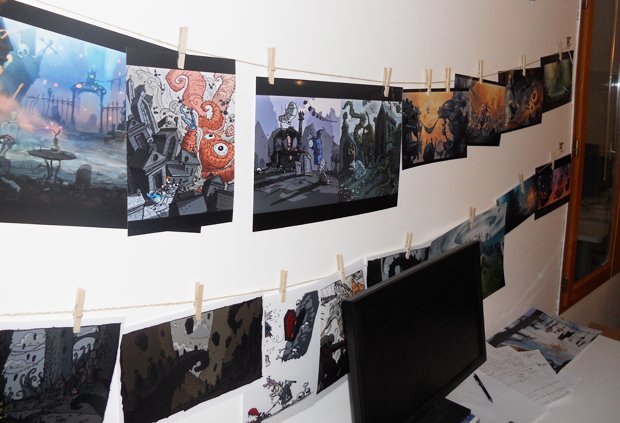
Above: Concept art decorates the walls at Ubisoft Montpelier
GR: Given how easy it is to drop art assets into the game, are there a lot of incidents where artists have come up with something cool or interesting for the game that you want to find a place for? Or is it more, “We need this sort of thing for a given area, so create something along those lines?”
MA: It’s a real bad answer for these things. (Shows us the art pictured below.) These three artworks show differences. That one is an artistic view of the ocean. We said “We want you to draw something in the Abyss, but whatever you want. Surprise us.” That one is more a variation of the same place, with different colors to create different moods, like pink, orange and blue.
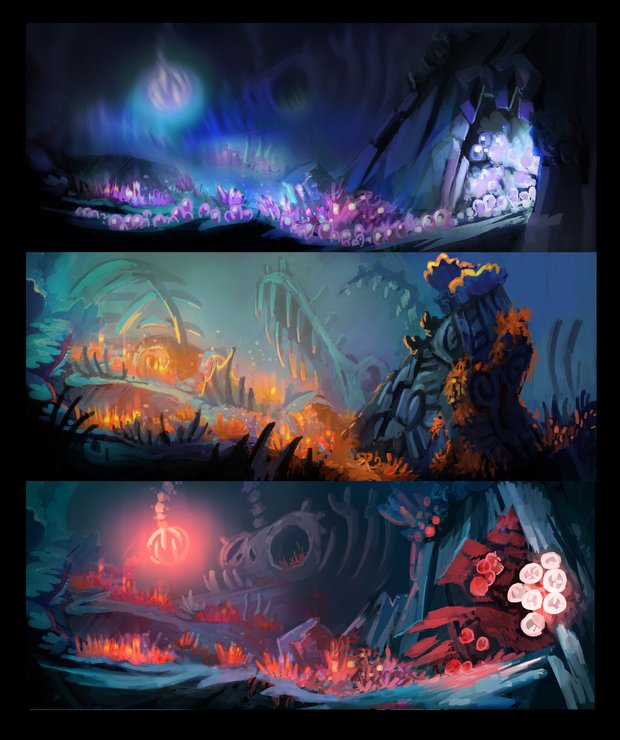
But that one (indicates the art below) is more an order, because we wanted straight shapes for the gameplay. We wanted something to hide the secret passages. So it’s really an order, but sometimes we have this concept art, we have the feeling that this should be in the game. And so we have that reverse way of thinking, like, how this can be really interesting in terms of gameplay? So we are both finding ways to converge in terms of creative process.
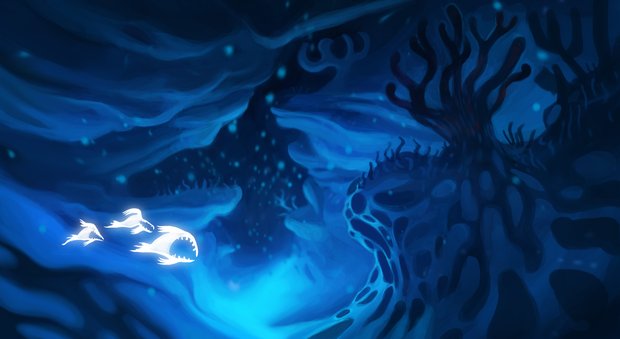
Gabrielle Shrager: It’s not always function that leads the dance; sometimes it’ll be the graphics.
MA: That’s really interesting, because it’s always a balance between surprise from the artist, or ordering things, and you know what you want. But you know, one person told me one day, “With the artist, you must not order. You must inspire.” Inspire the artist, more than ordering things to them. And it’s funny, because if you inspire the artist – like, not ordering things, but just saying “this is the Abyss, this is a place where everything seems to be hidden, but at the same time it seems peaceful,” then the artist can try to imagine things and evolve to create different things. Therefore, you have seen the level inside the dragon – it’s the same guy who did these two. Here, it’s more inside…
GS: An anemone. The interior of a sea anemone.
MA: Yeah, so it’s the same kind of idea. It’s recreating a surprising environment for us.

GR: While we’re on the topic of inspiration, what kinds of things do you draw upon to come up with the ideas for these games?
MA: You know, here we live close to the sea. It’s funny, because you can’t imagine how many things are in the sea, just behind you. Because I live just three kilometers from here, on the border of the sea, and I used to take my scuba diving suit… and you’ve got octopus, you’ve got some kind of giant fish, some very big fishes. Sometimes you can see sharks, you’ve got squids, and it’s a world that looks simple, but you can imagine a lot of things, and there are maybe more than what you can imagine. And I think that in a game, it’s very interesting to retrieve the sensation of exploring something, and not really being able to know what’s coming next. And that’s the kind of things we want to bring to the player.
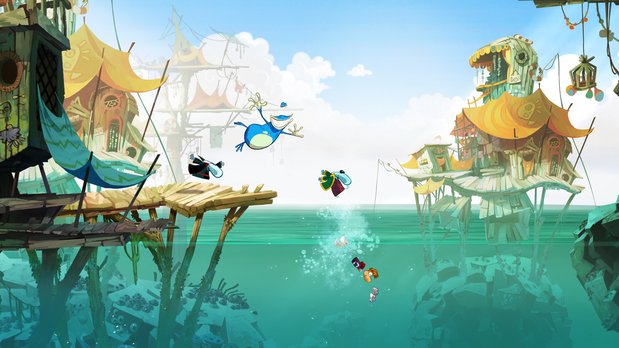
GS: Michel taught me something very important, because sometimes I would come in with art done by other artists. And he said “No, Gab, you don’t show the artists other artists’ art. You want to show them something, you describe something in nature, or you can show photos, or real elements from the real world. But if you show them another artist’s interpretation, you’re just going to influence them, whereas they have their own creative vision. And that’s the way I think that Michel also gets completely unique environments and characters, because he doesn’t ever say, “It’s like this person,” or “Have you heard of…?” It all comes from something inside him, and inside us, and inside each of the artists.
GR: So would you say most of your inspiration comes from nature? Are there any other games or pop-culture works you draw inspiration from?
MA: I think, looking back now at all the things we did in that game, it’s really… when we worked on Beyond Good & Evil, it was more political things, political situations, you know. It was the period of the Iraq war, and September 11, and it was a very terrific period in terms of propaganda and things like that. And the game is really close to this environment and situation. Rayman is more, I would say, close to nature, and the fact that when you were a kid, you were always discovering things.
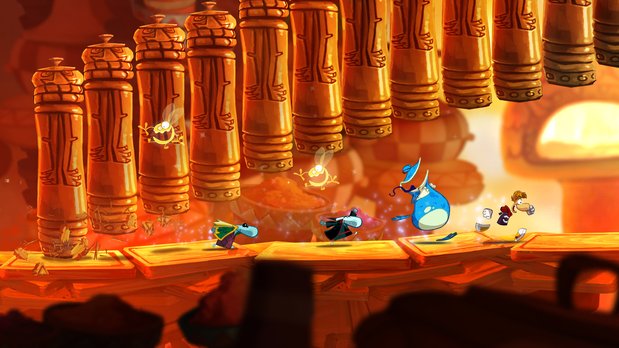
We don’t remember those periods, but when you are two, when you are three, everything is new, in fact. And maybe as a very, very young kid, you see someone in the street, and the face of that person, very old person, can be like a monster, you know? These people talking to you, you don’t really understand the language, you can’t imagine how much it’s influenced you as what you are now.
Some people say, “no, supernatural things, this is not good, this is not rational.” But we always live in an irrational world, because we don’t understand the world exactly as it is, especially when we were kids. Imagine when you go back in a place, when you were kids, you had the feeling that the place was giant. When you go back when you’re an adult, the size is normal. So that means that when you’re a kid, you thought giants were existing.

I think Rayman is really influenced by all these sensations. As adults, we still have sensations like that with the ocean, or with weird creatures we can see with microscopic vision. So that’s the main thing.

